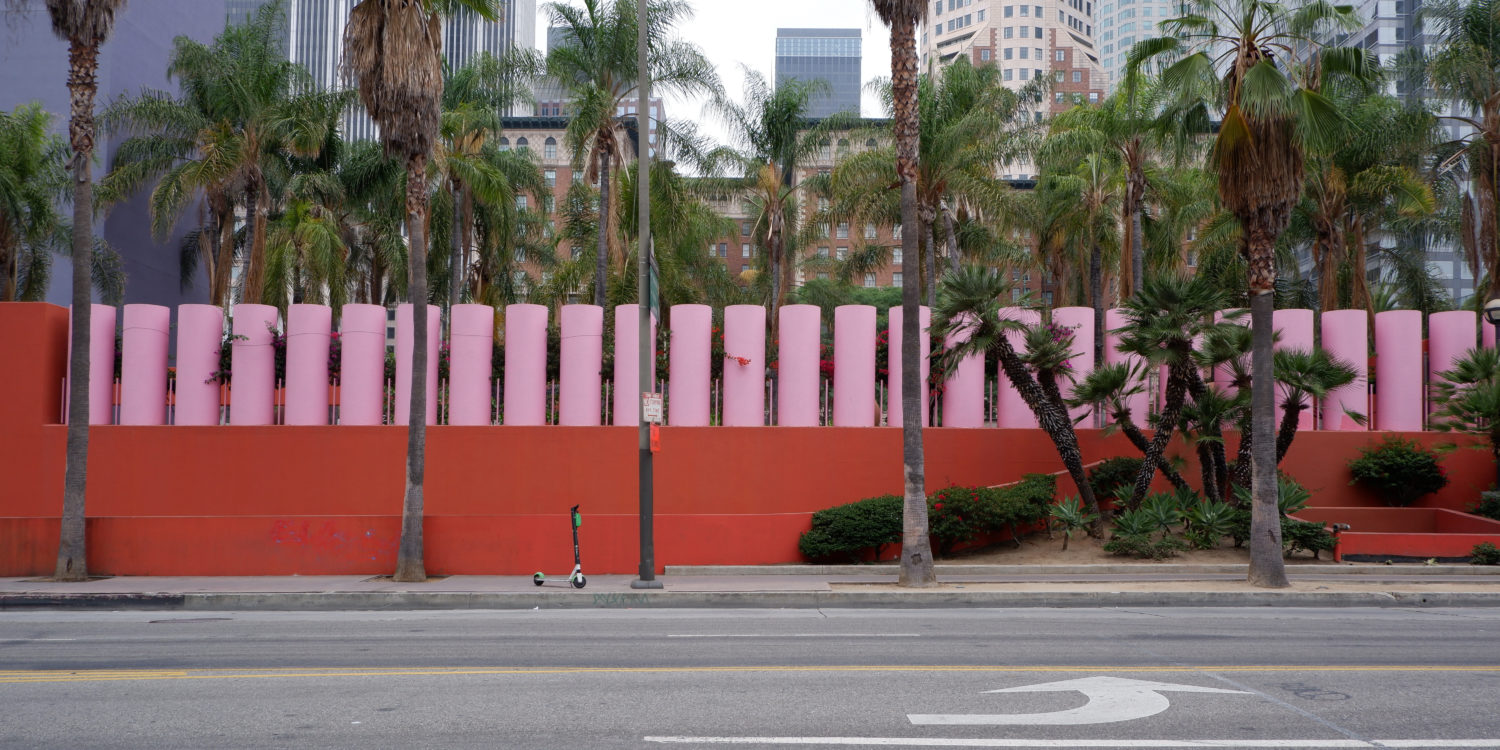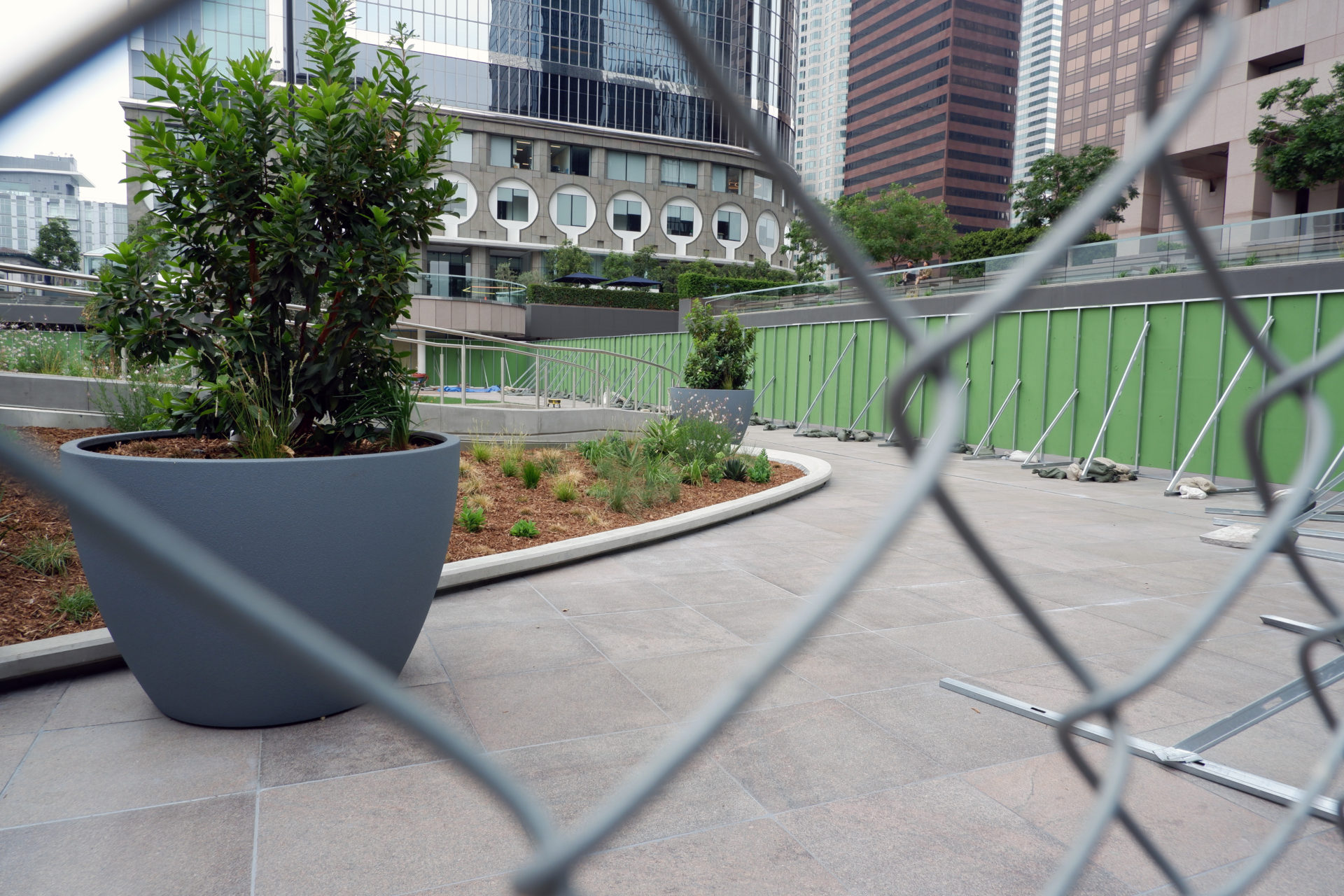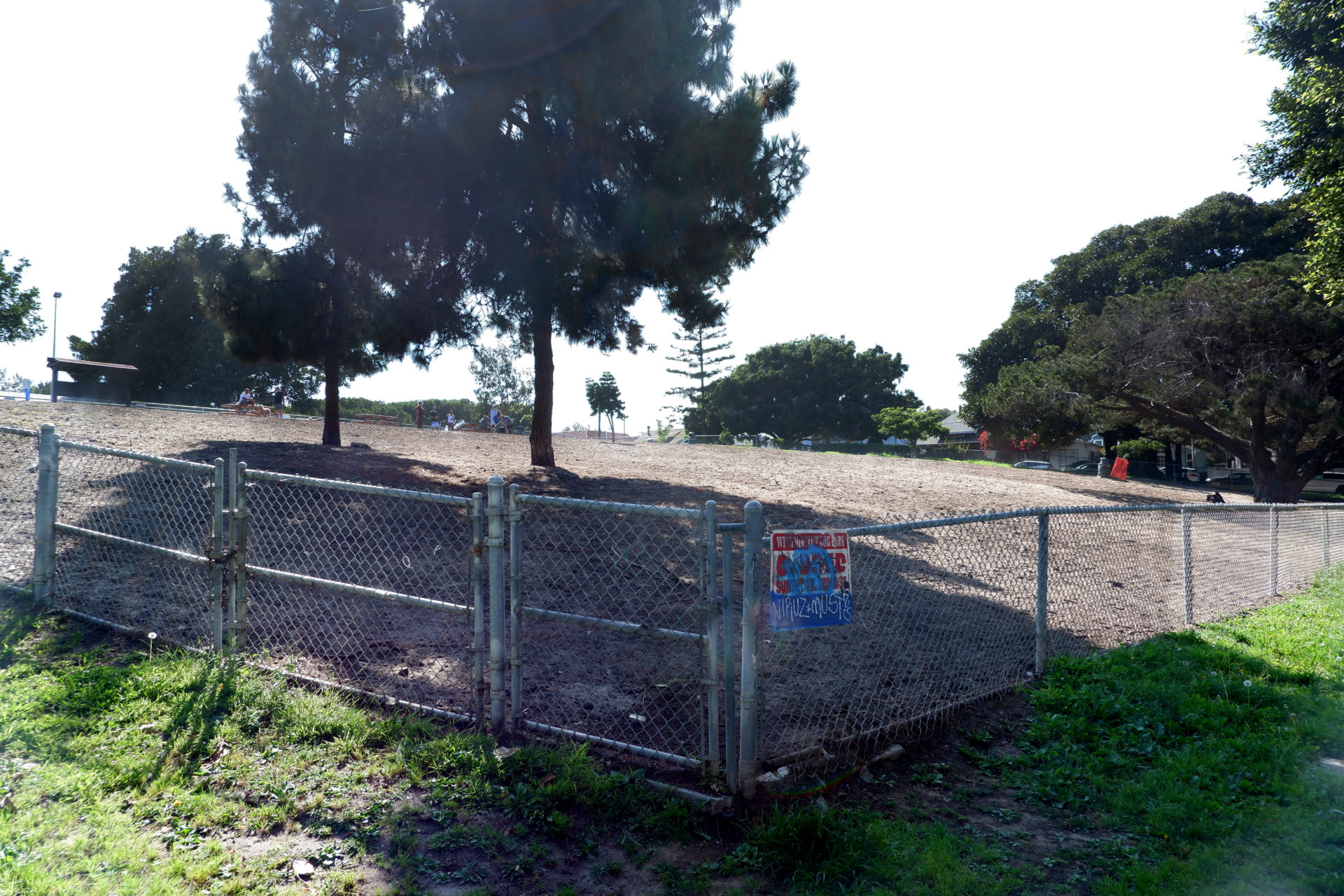This article is part of the FA special series A City of Our Own
On a night in January, Los Angeles city workers locked the public bathrooms at Echo Park Lake. On the surface, this act may seem fairly banal, carried out after the park’s trash bins were emptied and before the grass was mowed in the morning. But to the park’s 60 unhoused residents, this was a demonstration of power by the city’s propertied class. The values that underpin such moves have increasingly calibrated towards a militant reverence of private property, in a trademark tendency of neoliberal policies that have entrenched themselves in all levels of US government since the 1970s. By this logic, an image of the city that lures ever-more real estate development, higher land values and foreign investment is to be protected at all costs. Two intersecting circumstances can illustrate these class interests at play in LA: Los Angeles has fewer public bathrooms than any major American city, at the same time, it hosts one of the highest houseless populations in the US, per capita. It’s no surprise, then, that the bathrooms at Echo Park Lake stayed locked every night after that evening in January, even as a highly contagious pandemic arrived, as coffee shops and restaurants closed their doors, eliminating bathroom alternatives, and personal hygiene became a matter of life or death.
In May, the community took action. The residents of Echo Park Lake had already been organising with the support of grassroots groups to fight back against relentless encampment sweeps, police raids, and an utter lack of services. The Echo Park Lake community and the Services Not Sweeps coalition had staged a series of community power potlucks and protests against the criminalisation of poverty throughout the spring. As the pandemic dawned, organisers continued their outreach efforts, empowering unhoused residents to know and assert their rights, to demand better treatment by the City, and to raise public awareness about the human rights violations waged upon the city’s poor by elected officials. Their demands were simple: showers, 24/7 bathroom access, and of course, CDC-compliant shelter. In addition, the residents wrote an open letter to their city council member demanding to be treated as “fellow human beings”. The delivery of these basic needs was promised, but none of them were met—at least, not by elected officials. When the City refused to deliver showers, the community made its own. When the City cut power to the park, the community held a re-lighting ceremony with power generators and string lights. And on May 11th, a beautiful show of solidarity unfolded for the third night in a row. When city workers attempted to lock the bathrooms that night, fifteen allies stood in front of the doors and ensured that they stayed open for good.
In public space across LA, community power is both a means and an end. In refusing to allow their bathrooms to be locked, the community at Echo Park Lake began to actualise the park as a commons, despite how much local politicians and developers see it as a commodity. Across neoliberal Los Angeles, we catch glimpses of this emergent commons as neighbours cook together to feed their community, street medics prevent overdoses, and urban gardeners engage with land communally in defiance of land use policy. These practices make up a solidarity economy that often emerges as a form of community defence, but they are also proactive: they forge a politics of mutual aid, self-determination, and grassroots power that are necessary to prefiguring a world without oppression. The greatest enemies to these practices, on the other hand, are the myriad spatial manifestations of profit-driven hostility, which have their origins in the enclosures of the 16th century. Like the earliest fences and property lines, today’s locks on bathroom doors and sloped park benches mark the steady privatisation of public space in service of the real estate market. All over Los Angeles, public space is under attack.
The spatial artefacts of racial capitalism testify to how architecture has not only been complicit in the social cleansing of American cities, but actively fortified urban space against its use by those who are invested in the city’s public life. In response, public space becomes a stage for anticapitalist struggle where care manifests as concrete acts of resistance against hostile urbanism. The notion that care is intrinsically political flourished in the feminist struggle of the 1970s. The unwaged workers of bedrooms and kitchens around the world were the subjects of the anticapitalist feminism of the Wages for Housework network. They argued that their care work ensured a steady supply of workers into the workforce, and their fight brought politics home by making that care visible. Expanding that understanding, members of the Echo Park Lake community wield their own social reproduction as a political tool. For Wages for Housework, care politicised the home; while for today’s movements for the right to the city, care politicises public space. When the state denies the community’s right to social reproduction, the community finds ways to build up the physical and social infrastructures that ensure its growth.
Policing, harassment and eviction are functions of the profit motive, which has shaped Echo Park Lake’s destiny since its inception. In 1870, real estate investors financed the creation of the lake as a drinking water reservoir, seeking to lay the groundwork for development where there were only rolling hills and dirt roads. Today, the surrounding neighbourhood is in its late stages of gentrification, and its land values continue to arbitrate the park’s use. In the contradictory logic of the market, the commons is both despised for the public life it promotes and revered for its economic value. Within that value is latent power: gentrification doesn’t work when a community refuses to leave. And when the community in question occupies public space, their rejection of this hostility is more than a fight to stay: it’s a fight for the commons to remain under community control.
Like in every other city prized by transnational real estate, the enclosure has re-emerged as a prevailing logic in LA since the 1970s. Its legacy plays out today through the destruction and curtailment of public space, from private enterprise being entrusted to produce open space, as in the case of California Plaza downtown, to the policing of public life by security forces in the Black communities surrounding the University of Southern California campus. At the peak of the gentrification of Venice Beach, an open space that locals lovingly called “Green Hill” was converted into a dog park: its welcoming grassy slope replaced with dirt and surrounded by a fence with signage dictating the park’s use and opening hours. Downtown, Pershing Square once regularly hosted protests and large gatherings but has since undergone a series of redesigns that have made it increasingly inhospitable to crowds. In all of these spaces, a familiar entourage of planters, sprinklers, and landscape boulders prevents folks from bedding down at night. Meanwhile, almost any horizontal surface in LA’s public realm is sloped, spiked or barricaded. These techniques are so widespread that Twitter accounts tracking the illegal fences of Koreatown and planters in Venice popped up, as did an Instagram account documenting the hostile architecture of Los Angeles.
In the way that enclosure first divided the commons into the spheres of public and private, the city government’s securitisation, policing, and surveillance of public space effectively creates two worlds. LA Community Action Network (LA CAN) even came up with a hashtag to describe this reality: #ArchitecturalApartheid. What separates these worlds is a battlement made of surveillance technology and pigeon spikes, mortared together by racist, anti-poor policies. On one side of the wall are the private enclaves within which the dreams of the rich are met; and on the other, is what Nancy Fraser has called the counter-public: those who are deliberately excluded from and exploited by the dominant social class.
Mike Davis wrote about this dynamic in his 1990 essay “Fortress L.A.” For Davis, architectural apartheid renders visible neoliberalism’s reliance on exploitation. As the rich get richer the poor necessarily get poorer, and more and more elements of public life fall under the jurisdiction of private interest. Urban apartheid polices the very poverty that it creates: as the private realm grows in size and clout, the bar for entry into the lifestyles and protection of the private realm lifts higher and higher. As rents skyrocket in low-income neighbourhoods, the battlement wall goes up and ejects more residents into public space. Meanwhile, public space is increasingly subject to the colonising instinct of private enterprise: the battlement wall forms an ever-expanding ring.
If money is power in the neoliberal city, then the Los Angeles Police Department (LAPD) is the city’s single most powerful official entity, with a simple majority of 54% of the City budget. For Davis, hostile architecture betrays the immense influence of the LAPD and private security companies on the design of urban space. Indeed, spikes in the proliferation of security barriers and surveillance technology have come fast on the heels of the Watts Rebellion and the ’92 uprisings. During this summer’s uprisings against policing and white supremacy, plywood quickly became the cladding of choice for storefront facades. This fortification is far from incidental: it carries out the LAPD’s pacification mission while its battlements make the struggle of the most marginalised invisible to those with power and resources.
LA’s unhoused community’s efforts to organise, self-govern and claim a right to the city have historically been targeted and broken up by the LAPD. The City’s official policy for its unhoused residents, whose population numbers at least 36,600, is one of containment, dedicating the city’s Skid Row neighbourhood as LA’s only sanctioned encampment. But what officials call containment has become a community with the support of Skid Row’s LA CAN, a powerhouse of grassroots organising and public education. LA CAN’s CommunityWatch program has inspired solidarity between housed and unhoused communities across the city and lit the spark for Street Watch LA to grow out of the Housing & Homelessness committee of the LA chapter of the Democratic Socialists of America. Mike Davis observed that “Los Angeles, in its usual prefigurative mode, offers an especially disquieting catalogue of the emergent liaisons between architecture and the American police state.” But this propensity for prefiguration also gives rise to a new commons.
Where the state suppresses life in our parks and streets, grassroots organising nourishes it. Community Action Teams are growing, with the dream of rendering the police obsolete one neighbourhood at a time. Members of the Services Not Sweeps coalition cart away anti-homeless landscape boulders and list them as freebies on Craigslist. Stop LAPD Spying exposes the LAPD’s surveillance operations in order to keep organisers and activists safe. When cops show up to side with landlords during illegal evictions, the LA Tenants Union enforces human rights law by defending tenants’ rights to stay put. By providing support for folks who are subject to camp sweeps, Street Watch LA poses a direct challenge to the powers of city agencies. During the COVID-19 pandemic, historic practices of mutual aid are re-emerging in cities across the US as a popular shift towards daily solidarity and strengthened community ties. Pre-dating today’s crisis by millennia, mutual aid broadcasts the ethic that individual happiness is contingent on the happiness of all: none of us are free until all of us are free.
Against all odds, these community institutions are building social ties that will allow them to move from survival to prefiguration. What their practices point out is the importance of moving beyond mere critique, petitions, and naive pleas to politicians to put people over profit. Instead, these practices demonstrate proactive means of living out a world against and without the sadism of neoliberal capital. Where the powers that be seek to privatise the city, LA’s autonomous grassroots movements liberate and democratise it. Through dance parties and community power potlucks, they revive the commons.




